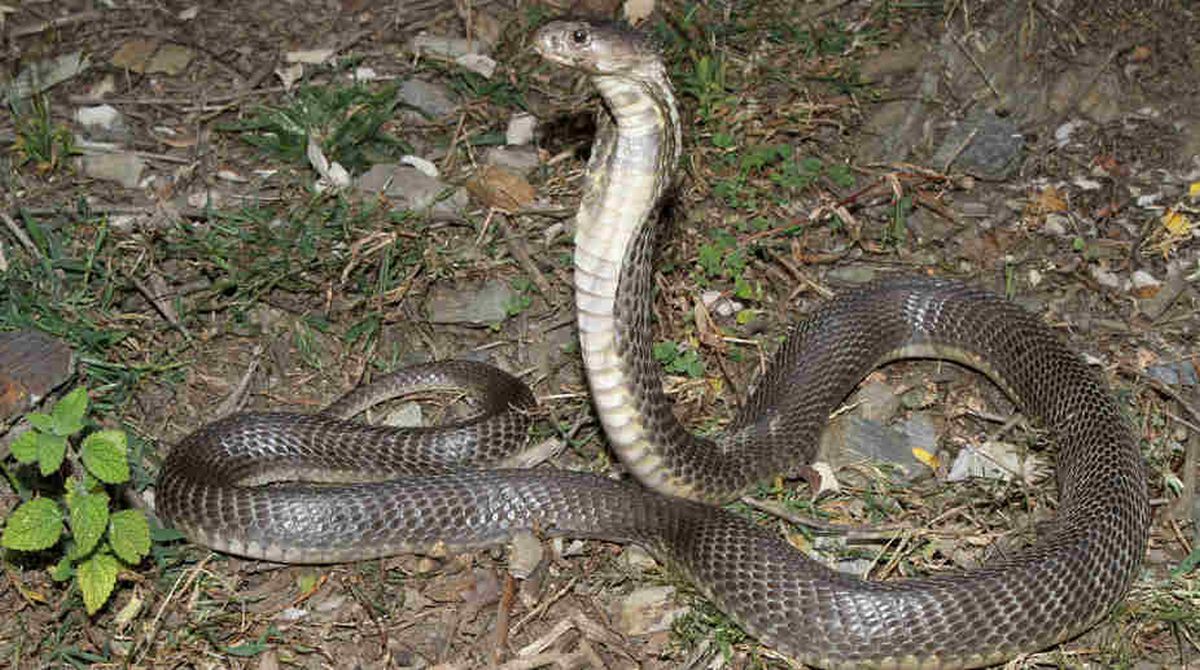Himachal verifies 99.84% family members on e-Parivar
Out of a total of 75,18,296 family members, 75,05,913 have been verified under this initiative, he added.
With no scientific data on snakebite deaths in the state, which often go unreported, Himachal is yet to work on a comprehensive strategy to mitigate the problem in totality, to save lives of humans as well as the deadly reptile.

A Central Asian cobra (Naja oxiana)
The first international snakebite awareness day on Wednesday hammers the need for handling the issue of snakebites in perspective that the hill state of Himachal lacks so far.
With no scientific data on snakebite deaths in the state, which often go unreported, Himachal is yet to work on a comprehensive strategy to mitigate the problem in totality, to save lives of humans as well as the deadly reptile (which is often killed by people in panic).
Advertisement
In Himachal, although majority snakebites occur in agriculture fields during day, the rural state is ever exposed to the risk of snakebites, as 90 per cent people live in villages with houses close to fields and forests, which increases the conflict.
Advertisement
Failures in handling the situation after snakebite for multiple reasons apart, the ‘snake rescue’ to conserve the reptile remains a grey area in Himachal to a great extent with not many foresters trained in it.
A few foresters here or there in the state can rescue snakes, if the reptile enters into the houses of people.
The issue got highlighted recently when a Cobra entered into a house in Mandi, and the forest department had no expertise to handle the situation.
The forest department staff did reach the spot, with Chief Minister (who got the call from panic stricken family at night) also intervening, the venomous snake was ultimately caught by the local snake charmers, who are usually keen on using the snake for commercial gains than releasing it back in the forest.
In a first, however, the wild life wing organised a two day workshop at Gopalpur zoo near Palampur last week for foresters from Kangra, Una, Hamirpur and Chamba to dispel myths related to the reptile, along with training in ‘snake rescue’ without physically contact of reptile.
“We are aware of the problem and we keep holding trainings for foresters in snake rescue,” said Chief Wild Life Warden in Himachal, Dr Ramesh Kang.
The snakebite cases keep trickling in the hospitals from April-May onwards and they reach their peak in August- September every year and then drop.
The warmers districts of the state, including Kangra, Solan, Una, Bilaspur, Mandi and Hamirpur, report high incidence of snakebites every year as they house deadly snakes, including Black Cobra, Russell’s viper, Himalayan pitviper, Common krait.
The state government has though made arrangements for Anti-Snake Venom (ASV) in 108 ambulance ( which has so far handled over 5000 snakebite emergencies), a number of people still don’t avail the service and are instead taken to ‘ojhas’ (traditional healers) first, which results in lapse of time. A good number of species of snakes arae non-venomous, but many people spoil the case by reacting in panic and taking to wrong methods of first-aid.
“A sustained awareness campaign is the need of hour to educate people in handling snakebites” said medical experts.
In field, the staff at various health facilities in Himachal, including doctors, are often uncomfortable handling snakebite victims for fear of reaction of ASV and often refer the patient to higher institution, resulting in time lapse.
There is no training of doctors on this important issue while in service, which their MBBS curriculum also does not take care of. It is pertinent to mention that in India, roughly 50,000 people die of snakebites every year.
Advertisement